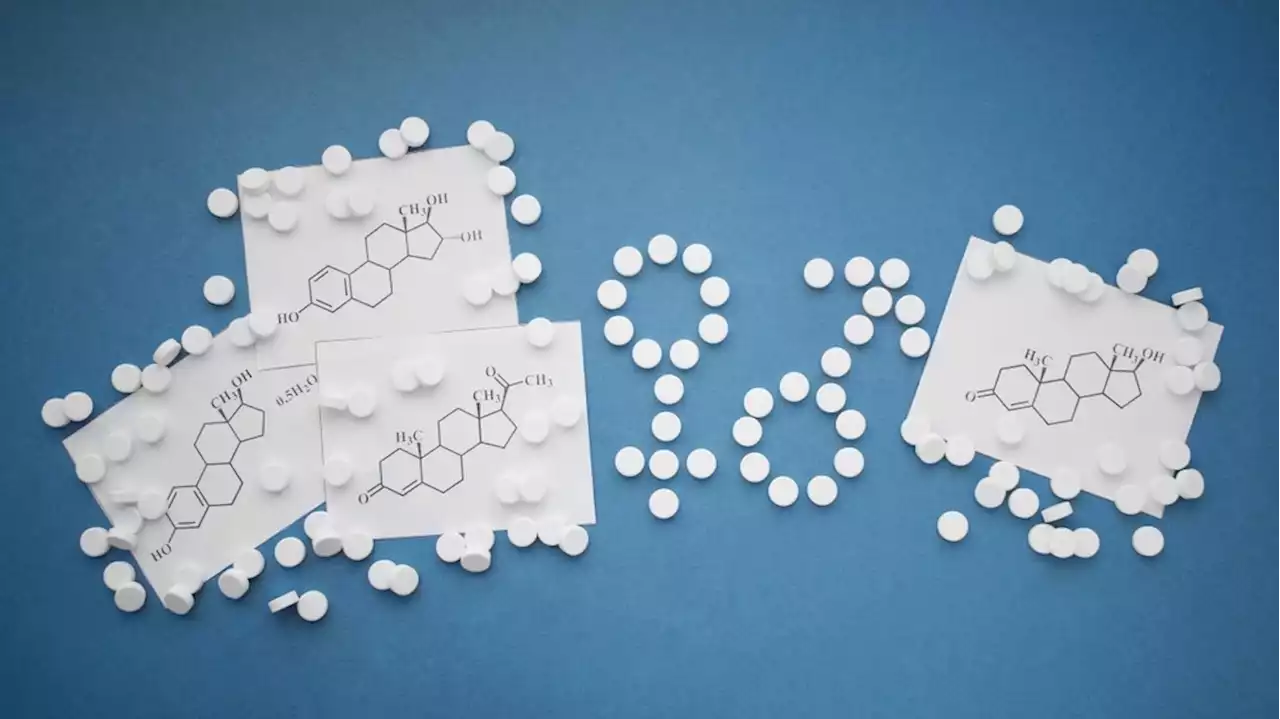Carbon Nanodots Used to Detect Estrogenic Steroids: ACS_AMI carbonnanodots QuantumDots estrogen oestrogen steroids nanomaterials
By Bhavna KavetiAug 4 2022Reviewed by Susha Cheriyedath, M.Sc. Estrogenic steroids such as estrone , estradiol , estriol , and ethynyl estradiol are among the most potent endocrine disrupting compounds causing severe health effects to humans and other animals when present in water bodies, as they are the main disposal pathway for the human waste born estrogenic steroids.
R-CNDs were characterized using atomic force microscopy and transmission electron microscopy . The results revealed that R-CNDs had a spherical morphology with a lateral size in the range of 3 to 8 nanometers and a height of 1 to 8 nanometers. Unlike other carbon nanodots , R-CNDs were soluble in organic solvents.
Humans and animals excrete estrogenic steroids in different amounts that end up in the environment through sewage discharge and animal waste disposal. The presence of estrogenic steroids in the aquatic environment is due to their incomplete removal during the wastewater treatment processes. Thus, to circumvent this problem, the water solubility of CNDs was reduced by preparing R-CNDs from 2-aminophenol with poor water dispersibility and high colloidal stability in apolar solvents. Moreover, the nitrogen-doped R-CNDs have improved electron-donating property that modifies the selectivity of electrodes.
The linear amino polysaccharide chitosan was used to modify the pencil-graphite electrode due to its adhesive nature and weak cationic polyelectrolyte properties. Thus, the carboxyl functional groups on the surface of R-CNDs interact with the cationic chitosan to form a hybrid chitosan /CNDs film. This hybrid film was applied for the voltammetric determination of four abandoned estrogenic steroids: E1, E2, E3, and EE2.
Conclusion Overall, the formation of R-CNDs from 2-aminophenol via solvothermal synthesis was confirmed by employing FTIR spectroscopy, AFM, and TEM studies. R-CNDs prepared in this work were photoluminescent and spherically shaped with diameters between 3 and 8 nanometers, embedded into chitosan-modified pencil-graphite electrodes to determine the presence of estrogenic steroids in water samples.
Ireland Latest News, Ireland Headlines
Similar News:You can also read news stories similar to this one that we have collected from other news sources.
 Converting Fish Waste into Carbon-Based NanomaterialCarbon-based nanomaterials are increasingly being used in electronics, energy conversion and storage, catalysis, and biomedicine due to their low toxicity, chemical stability, and exceptional electrical and optical capabilities.
Converting Fish Waste into Carbon-Based NanomaterialCarbon-based nanomaterials are increasingly being used in electronics, energy conversion and storage, catalysis, and biomedicine due to their low toxicity, chemical stability, and exceptional electrical and optical capabilities.
Read more »
 Converting Fish Waste into Carbon-Based NanomaterialCarbon-based nanomaterials are increasingly being used in electronics, energy conversion and storage, catalysis, and biomedicine due to their low toxicity, chemical stability, and exceptional electrical and optical capabilities.
Converting Fish Waste into Carbon-Based NanomaterialCarbon-based nanomaterials are increasingly being used in electronics, energy conversion and storage, catalysis, and biomedicine due to their low toxicity, chemical stability, and exceptional electrical and optical capabilities.
Read more »
 Amazon emitted 18% more CO2 in 2021, blames growthHow's that renewable energy transition going?
Amazon emitted 18% more CO2 in 2021, blames growthHow's that renewable energy transition going?
Read more »
 Polio found in New York wastewater could be linked London and JerusalemPolio appears to have been present in upstate New York's wastewater for at least a month before a patient was diagnosed in the first case of the virus in the US in nearly a decade.
Polio found in New York wastewater could be linked London and JerusalemPolio appears to have been present in upstate New York's wastewater for at least a month before a patient was diagnosed in the first case of the virus in the US in nearly a decade.
Read more »
 Repent! Evil Bikes’ Epocalypse eBike has come!Evil Bikes unleashes their first ebike: the Epocalypse eMTB, a full carbon, Shimano EP8 powered, long travel trail beast.
Repent! Evil Bikes’ Epocalypse eBike has come!Evil Bikes unleashes their first ebike: the Epocalypse eMTB, a full carbon, Shimano EP8 powered, long travel trail beast.
Read more »
 South Korean researchers develop nanotech tattoos as health monitoring devicesThe team at the Korea Advanced Institute of Science and Technology have created an electronic tattoo ink made of liquid metal and carbon nanotubes that effectively functions as a bioelectrode.
South Korean researchers develop nanotech tattoos as health monitoring devicesThe team at the Korea Advanced Institute of Science and Technology have created an electronic tattoo ink made of liquid metal and carbon nanotubes that effectively functions as a bioelectrode.
Read more »
